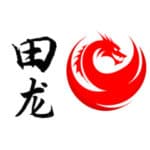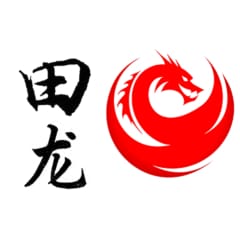Preparation of chart of accounts
Accounting Services
Typically, the Chart of Accounts usually includes at least three columns:
- Account: Lists the account names.
- Type: Lists the type of account – assets, liabilities, owner’s equity, income, and expenses.
- Description: Contains a description of the type of transaction that should be recorded in the account.
Chart of Accounts
The chart of accounts is a list of accounts used to categorize every financial transaction your business generates. Making sure you’ve set up a good chart of accounts from the beginning is important, because it’s the basis of your accounting records. For example, you could have an account called “Consulting Income” to record all income from consulting services you provide.
There’s no secret to knowing how to setting up a Chart of Accounts for your business and if you are unsure, we can help you make the list of the accounts that apply to all your business transactions. Don’t panic if you can’t think of every type of account you may need because we can easily add it to the Chart of Accounts at any time.
Setting up your income accounts depends on what kind of products or services you provide. For example, if you have only one main service, you may just have one Accounting services income account. If you offer multiple products and services, perhaps tax preparation along with bookkeeping services, we recommend that you create an income account for each one.
Whether you are a service-based business or you sell products, your business bookkeeping and accounting needs are the almost the same. So you need to ask yourself, what accounts do you need in your chart of accounts?
Account types
Five account types make up the chart of accounts: Income and Expenses appear on the profit and loss statement, while Assets, Liabilities, and Owner’s Equity appear on the balance sheet report.
Balance Sheet (Statement of Financial Position)
Assets
Liabilities
Owner's equity
Profit & Loss (Statement of comprehensive income)
Income
Expenses
Drafting chart of accounts tips
Be aware that you may wish to alter your chart of accounts as your business grows. You may find that you have set up too many accounts and unnecessarily complicated your recordkeeping tasks. You may wish to set up more accounts once you see how your balance sheets and profit and loss statements look. You may change, add, or delete accounts at any time. Remember, however, that any transactions that have been recorded in an account must be transferred to any new account or accounts that take the place of the old account.
If you acquire another company, a key task is shifting the acquiree’s chart of accounts into the parent company’s chart of accounts, so that you can present consolidated financial results. This process is known as mapping the acquiree’s information into the parent’s chart of accounts.
Chart of accounts Mapping
Assets
Assets are items owned by your business. Examples include money that you have in your bank account, inventory that you have on hand, and equipment that you use in your business. Assets can be found on the balance sheet report. Examples include:
- Cash (main checking account)
- Cash (payroll account)
- Petty Cash
- Accounts Receivable
- Fixed Assets
- Marketable Securities
- Allowance for Doubtful Accounts (contra account)
- Prepaid Expenses
- Inventory
- Accumulated Depreciation (contra account), etc.
Liabilities
Liabilities are the money that your business owes to others. Examples include a car loan, a mortgage that you have for a warehouse you purchased to store inventory, and sales tax that you have collected from your customers are all liabilities. Liabilities are listed on the balance sheet report. Examples include:
- Accounts Payable
- Accrued Liabilities
- Taxes Payable
- Wages Payable
- Notes Payable
Owner's equity
Equity is everything your business owns. For example, any money an owner invests in their business is considered equity. Retained earnings is also equity, which is the net profit or loss that’s been kept (i.e., retained) in the business since inception. Owner’s equity can be found on the balance sheet report following assets and liabilities. Examples include:
- Common Stock
- Preferred Stock
- Retained Earnings
Income
Income refers to the proceeds you earn from the sale of products or services. For example, plumbing services sold or the sale of five lamps to a customer is income. Income is included on the profit and loss report, also known as the income statement. Examples include:
- Revenue
- Sales returns and allowances (contra account)
Expenses
Expenses are any purchases and payments you make to run your day-to-day business operations. For example, advertising expenses, office supplies, and payroll are all expenses. Expenses are included on the profit and loss report along with income. Examples include:
- Cost of Goods Sold
- Advertising Expense
- Bank Fees
- Depreciation Expense
- Payroll Tax Expense
- Rent Expense
- Supplies Expense
- Utilities Expense
- Wages Expense
- Other Expenses
Chart of Accounts Best Practices
The following points can improve the chart of accounts concept for a company:
Consistency
It is of some importance to initially create a chart of accounts that is unlikely to change for several years, so that you can compare the results in the same account over a multi-year period. If you start with a small number of accounts and then gradually expand the number of accounts over time, it becomes increasingly difficult to obtain comparable financial information for more than the past year.
Lock Down
Do not allow subsidiaries to change the standard chart of accounts without a very good reason, since having many versions in use makes it more difficult to consolidate the results of the business.
Size Reduction
Periodically, review the account list to see if any accounts contain relatively immaterial amounts. If so, and if this information is not needed for special reports, shut down these accounts and roll the stored information into a larger account. Doing this periodically keeps the number of accounts down to a manageable level.
We are Experts in Preparing Chart of Accounts for Your Business
Tianlong Services provides accounting software that includes sample charts of accounts for various types of businesses. We anticipate that a company will expand and/or modify these sample charts of accounts so that their specific needs are met. Once a business is up and running and transactions are routinely being recorded, the company may add more accounts or delete accounts that are never used.

No Obligation
Request a free trial
You will get a month’s worth of bookkeeping. Whether or not you continue with us, your reports for the month are yours to keep.

